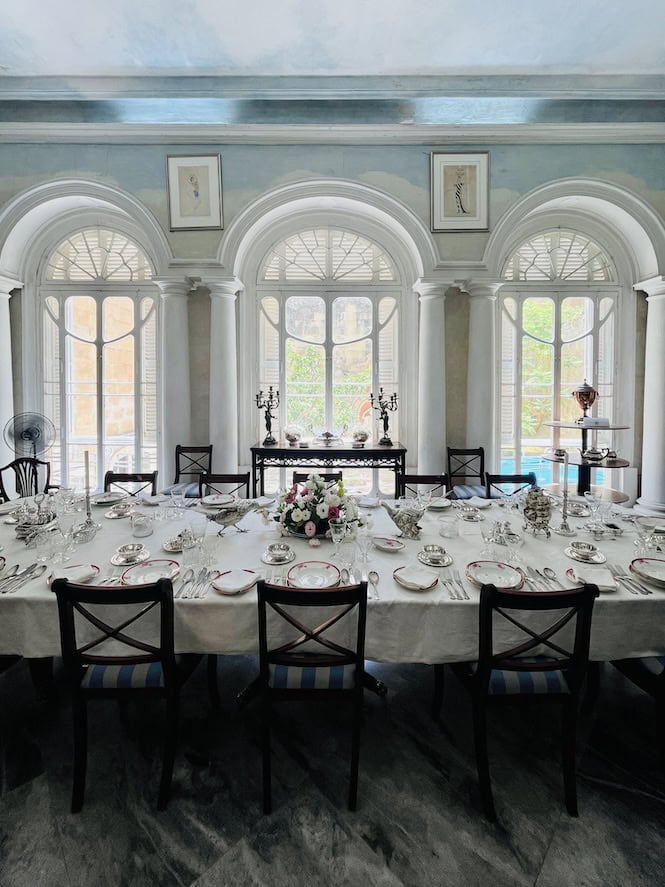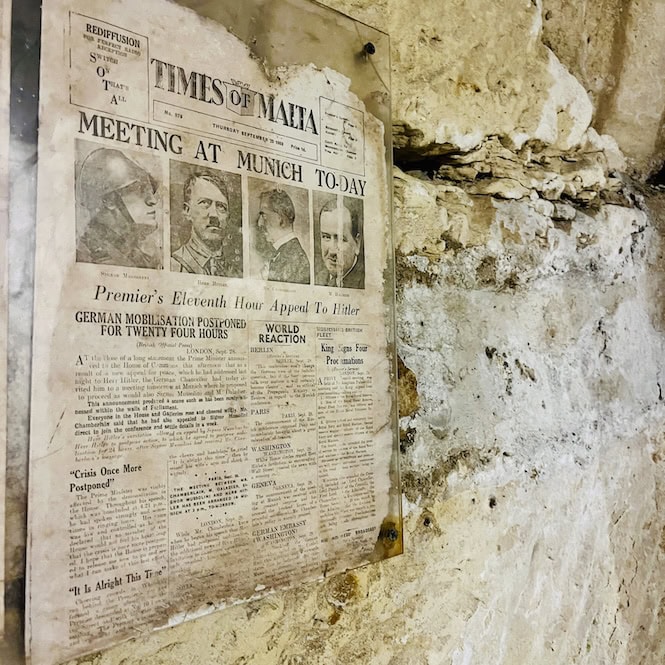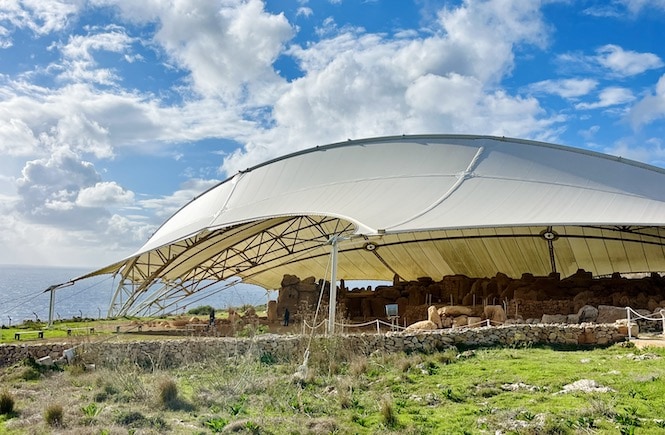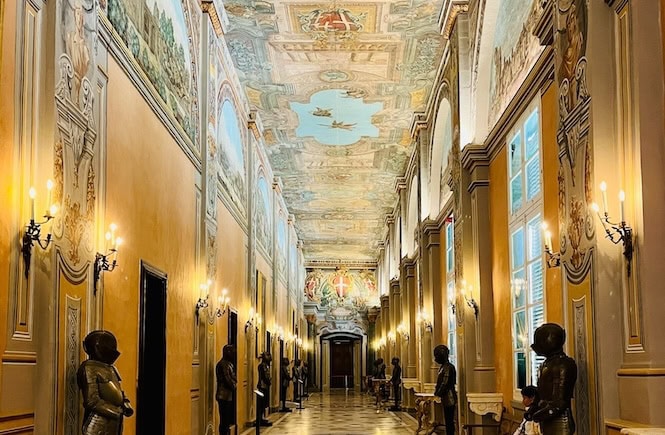Just a quick heads up – some of the links I share on this site are affiliate links. That means if you click on one and make a purchase, I may earn a small commission at no extra cost to you. Your support through these links helps me create valuable content.
Casa Rocca Piccola is one of the most fascinating museums in Malta. It’s a 16th-century palace, still lived in by a noble Maltese family.
I’ve been to Valletta many times, but I always wanted to check out Casa Rocca Piccola. So I finally went, and it was so worth it. The original 16th-century interior and furniture, and many family artefacts make it fascinating. It was nice to see how Maltese nobility lived over 400 years ago.
In this post, I’ll share key details for your visit. First, I’ll explain why Casa Rocca Piccola is a must-see. Then, I’ll guide you on how to get there and what to expect.
Brief history of Casa Rocca Piccola
Casa Rocca Piccola has a rich history dating back to 1580. It was built during a time when the Knights of St. John defeated the Turks in 1565. They built Valletta, a prestigious city to rival Paris and Venice.
Admiral Don Pietro la Rocca built Casa Rocca Piccola as one of two houses he owned in Valletta. It was unique, known as “la casa con giardino” (the house with the garden), as gardens were typically not allowed in Valletta homes.

The palace showcases the grandeur of 16th-century noble living. It’s one of the last private, unconverted Valletta palaces still inhabited today.
It underwent changes over time: divided into two houses in the late 18th century, modified in 1918, and an air raid shelter added before World War II.
Casa Rocca Piccola gives a rare look at Maltese nobility’s lifestyle over four centuries. It’s a historical landmark in Valletta due to its preserved architecture and furniture.
If you want to understand Malta’s history well, take a walking tour in Valletta. Look at my guide for the best Valletta walking tours.
Why Visit Casa Rocca Piccola
Casa Rocca Piccola surprised me in the best way possible. I felt like I was inside a real home rather than museum.
Each room was unique and really beautiful. They had all kinds of original furniture from different time periods, old books, and paintings from the 1600s and later. It felt like exploring my grandma’s house, which was full of old stuff and memories.
I went on a guided tour with Matthias, and he made the palace super interesting. He showed us hidden doors that servants used back in the day and shared some weird facts from history. He told us how the nobles used to get ice all the way from Mount Etna.
He pointed out portraits with mountains in the background. They meant that the people in them owned land in Sicily. That was prestigious back then.
The palace has World War II bomb shelters underneath it. These rooms saved over 100 people from bombing attacks. I couldn’t help but imagine noble and poor families huddled together, waiting for the air raids to pass. It’s impressive how tough times can unite people.

I loved the peaceful atmosphere. Unlike crowded tourist spots, Casa Rocca Piccola offered a calm, intimate visit. It featured a lovely courtyard with rest tables. Plus, there was a parrot named Kiko. Everyone stopped to chat with it.

Visitor Information
I recommend taking a guided tour, which is included in the price. You can join an English-language guided tour every hour, which lasts for about 45 minutes.
You can also explore the palace by yourself. You have the choice to grab brochures in various languages, or try out the audio tour app. It is offered in English, French, Italian, Spanish, and German.
Most of Casa Rocca Piccola is wheelchair accessible, featuring a lift to the main floor.
Opening times: Monday to Saturday, 10 am to 5 pm
Online ticket: buy here
Location: Google Maps
Casa Rocca Piccola is located on Valletta’s main street, close to the Grandmaster’s Palace.
Parking in Valletta can be a challenge due to limited spaces. It is best to use public transport or park outside the city walls and enjoy a brief five-minute walk from the Valletta Bus Terminus.

Get a FREE Attractions Map
Planning a trip to Malta, Gozo, or Comino? Get this free interactive map filled with insider tips, Google Maps links, and more.
Casa Rocca Piccola: A Room-by-Room Tour
Let me take you on a tour through Casa Rocca Piccola’s fascinating rooms.
The Chinese Room showcases Maltese silver vinaigrettes from the 18th century. It also features silver buttons, a sponge box, and Asian artefacts like Buddha. A family tree on the wall displays four generations of the house’s lineage.

The Sala Grande Room combines Maltese history and European craftsmanship. It features a 17th-century chest with Maltese crosses, one of Malta’s oldest furniture pieces, and a Bohemian chandelier.

In this room, you can also see a portable 18th-century chapel. When opened, it reveals a fully functioning chapel. The decorated piece served as a practical way to hold baptisms and religious services inside homes.

The Winter Dining Room contains Florentine furniture and 17th-century Maltese landscapes. It’s decorated with allegorical paintings and Pompeian-style designs. It also has family trees showing noble lineages.

The Archives Room holds a large collection of family documents. It includes wills from the 1500s and records of the family’s business.

The Cabinet has family trees showing a proof of royal blood. To be part of St. John’s Knights, you needed to have four generations of noble ancestors. Also, there are two display cases with chess pieces and knick-knacks.

The Four-Poster Bedroom centers around a matrimonial bed from 1867. This bed saw the birth of nine children.

The Green Room has a Venetian glass chandelier and portraits of notable family members.

The Library displays historic ship paintings from the 17th century and portraits of famous writers who visited Malta. You can also see a unique 18th-century Maltese clock with only one handle.

The Blue Room contains unique 18th-century surgical implements in silver and antique Maltese silverware. It offers a view of St. Catherine’s Church and displays modern artworks.

The Summer Dining Room, once an open terrace, now showcases art nouveau style. It’s still used as a dining room for special occasions.

Finally, let’s talk about the Bomb Shelters. These were actually old wells converted during World War II. They’re a pretty sobering reminder of what Malta went through during the war.

Casa Rocca Piccola is one of the best museums in Malta. It gives you a unique peek into the island’s history – from its luxury rooms to its wartime shelters.
If you’re into history, I’ve got more posts about Malta’s historical sites. Check out the ancient burial site, Hal Saflieni Hypogeum, walk through Mdina’s medieval streets and explore the Three Cities.
Don’t miss the amazing Mosta Rotunda, one of Europe’s largest unsupported domes. And if you want a complete guide to Malta’s cultural treasures, check out my post on UNESCO World Heritage Sites in Malta.
Have questions about your Malta trip? Join my FREE private Facebook Group, Malta Travel Tips, where you can find helpful resources and connect with fellow travelers!




